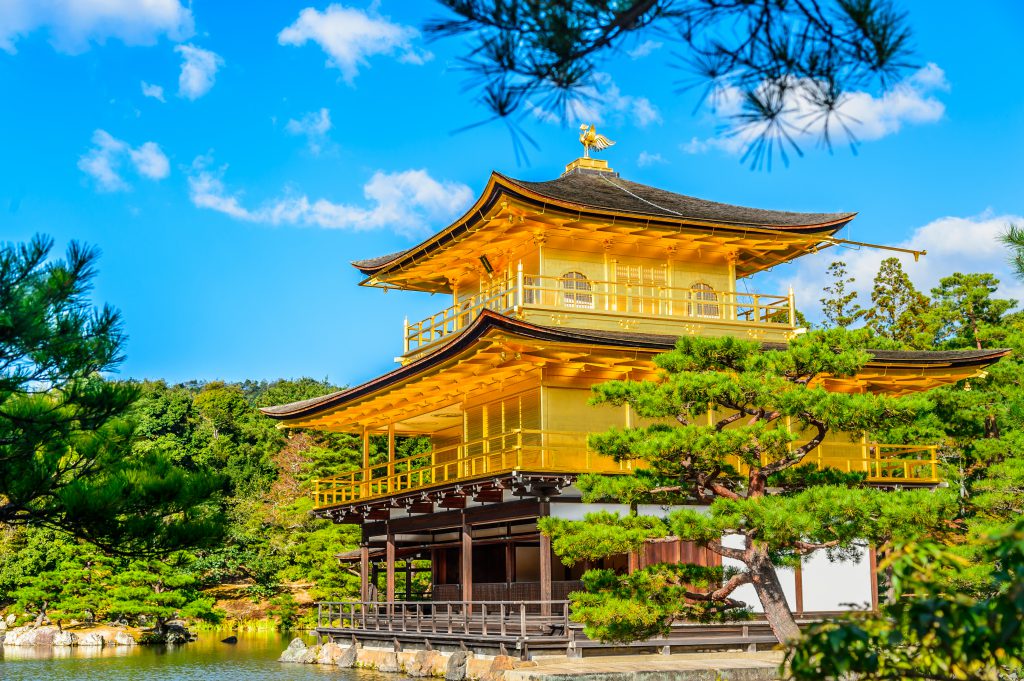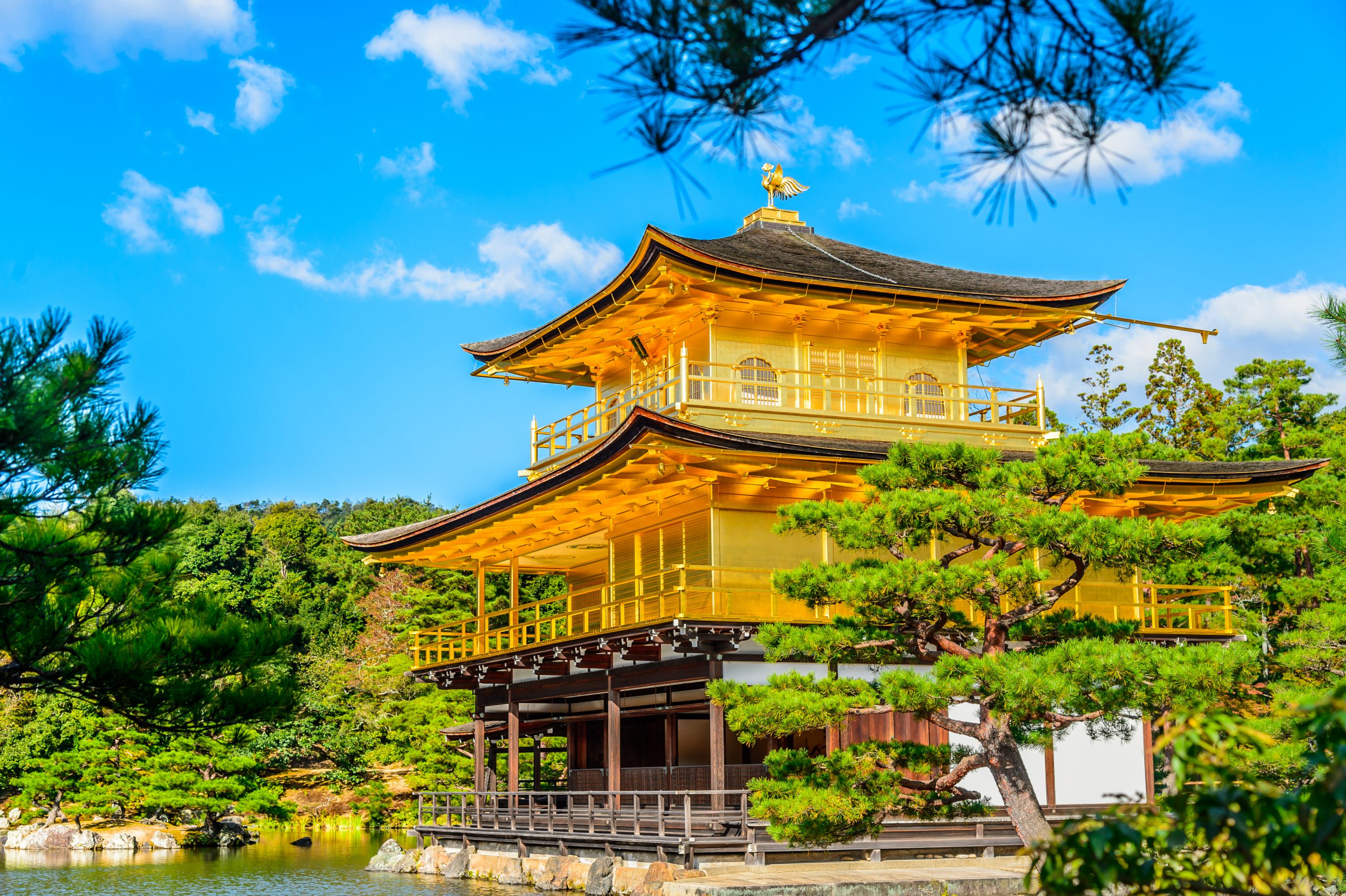About Kinkakuji
Kinkakuji is a temple located in Kita-ku, Kyoto; and is registered as a World Heritage Site, as one of the “cultural assets of the ancient capital of Kyoto.” The official name is Rokuonji Temple, but it is generally called by the name of Kinkakuji Temple, because the “Kinkaku” shrine in the precincts are particularly famous.
Kinkakuji was built in 1397 by Yoshimitsu Ashikaga, the third general of the Muromachi Shogunate. There used to be a gorgeous mountain cottage called, “Kitayama Tei” , created by Lord Fujiwara, but it was badly ruined by Yoshimitsu. Yoshimitsu, who took over this land, will make a major renovation to “Kitayama Dai” and build “Kitayamaden”. The Shariden, which is now called “Kinkaku”, was also built at this time.
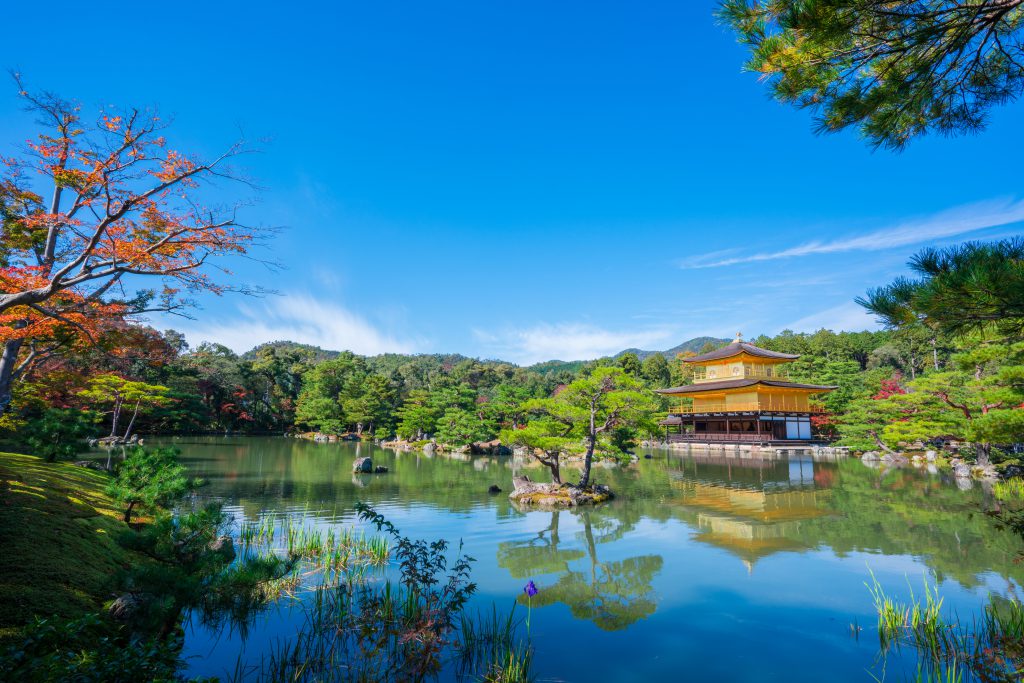
The history of Kinkakuji
Kinkakuji was built in 1397 by Yoshimitsu Ashikaga, the third general of the Muromachi Shogunate. There used to be a gorgeous mountain cottage called, “Kitayama Tei” , created by Lord Fujiwara, but it was badly ruined by Yoshimitsu. Yoshimitsu, who took over this land, will make a major renovation to “Kitayama Tei” and build “Kitayamadono”. The Shariden, which is now called “Kinkaku”, was also built at this time.
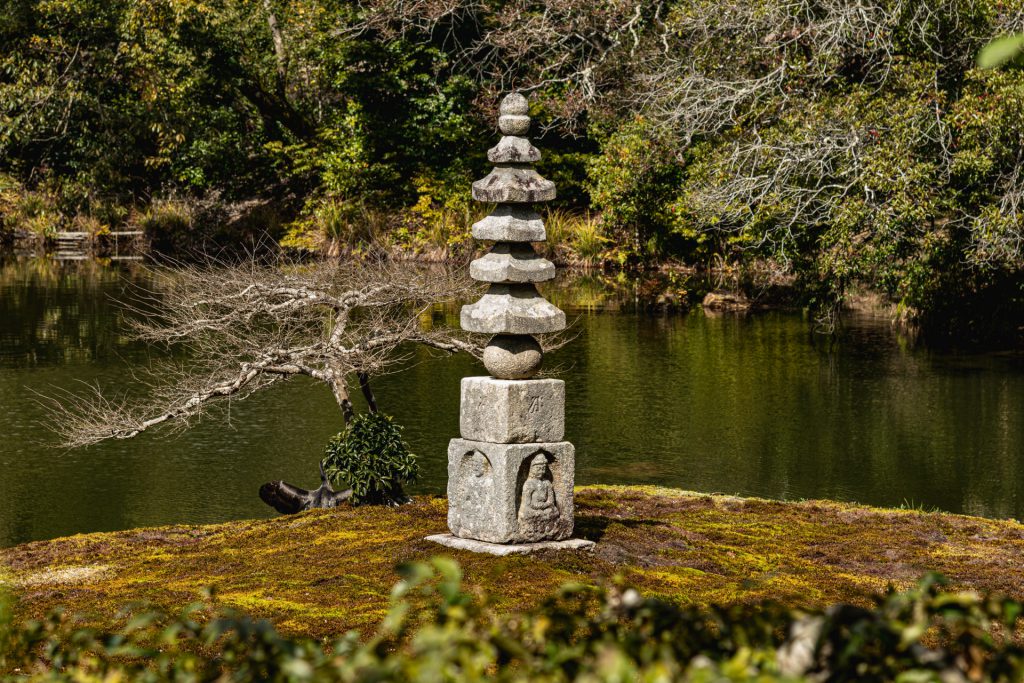
The first floor of the Kinkaku building is the same as a noble residence, the second floor is a samurai house, and the third floor is the Buddhist temple influenced by Zen. When the “Kitayamadono” was completed, Yoshimitsu lived there all his life, and after his death, Kitayama shrine became a Zen temple according to Yoshimitsu’s will. At this time, it was named Rokuon-ji Temple by taking two letters from Rokuon-in, the law name of Yoshimitsu. Currently, there is a statue of Yoshimitsu on the first floor of the Kinkaku. You can’t see inside, but you can see the statue from the outside because the door called “Hajitomi” is open.
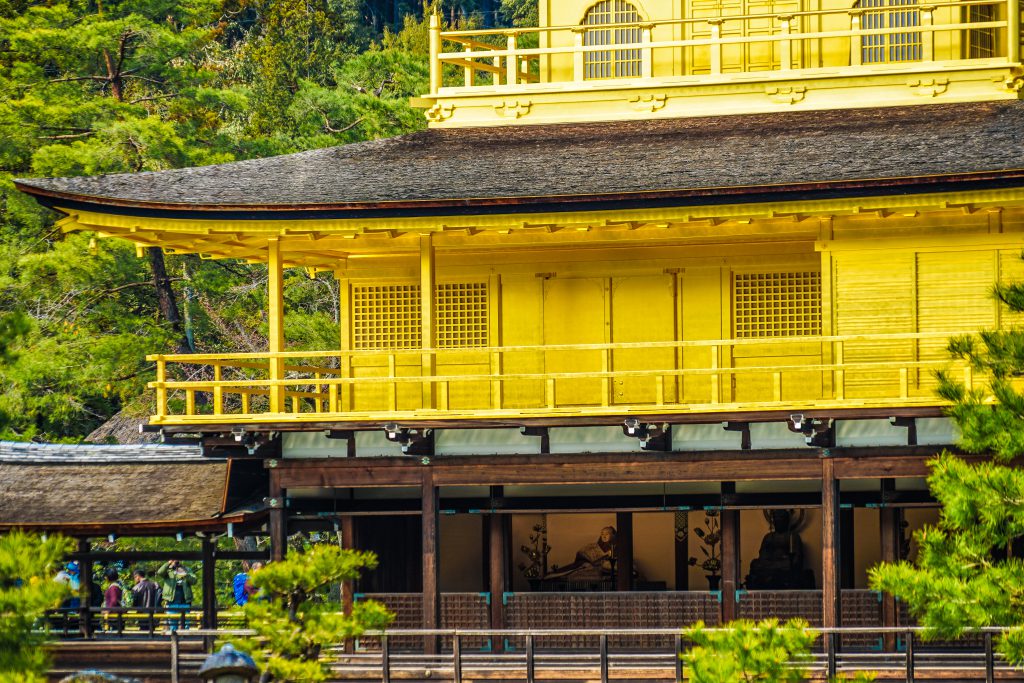
The Kinkaku built by Yoshimitsu was destroyed by fire in 1950, and the present Kinkaku was rebuilt in 1955. It is a wooden three-story building, and the gold leaf, which is synonymous with Kinkaku, is affixed to the second and third floors. Especially on the 3rd floor, the interior is covered with gold leaf from the pillars to the ceiling, except for the floor, and its luxury is breathtaking.
In 1986, restoration work was carried out to re-cover the gold leaf on the outer wall, and the total amount of gold used at that time amounted to 20 kilograms. Its beautiful, golden color reflects on the mirror lake in front of the Kinkaku, and you can see it clearly reflected on the surface of the lake on sunny days.
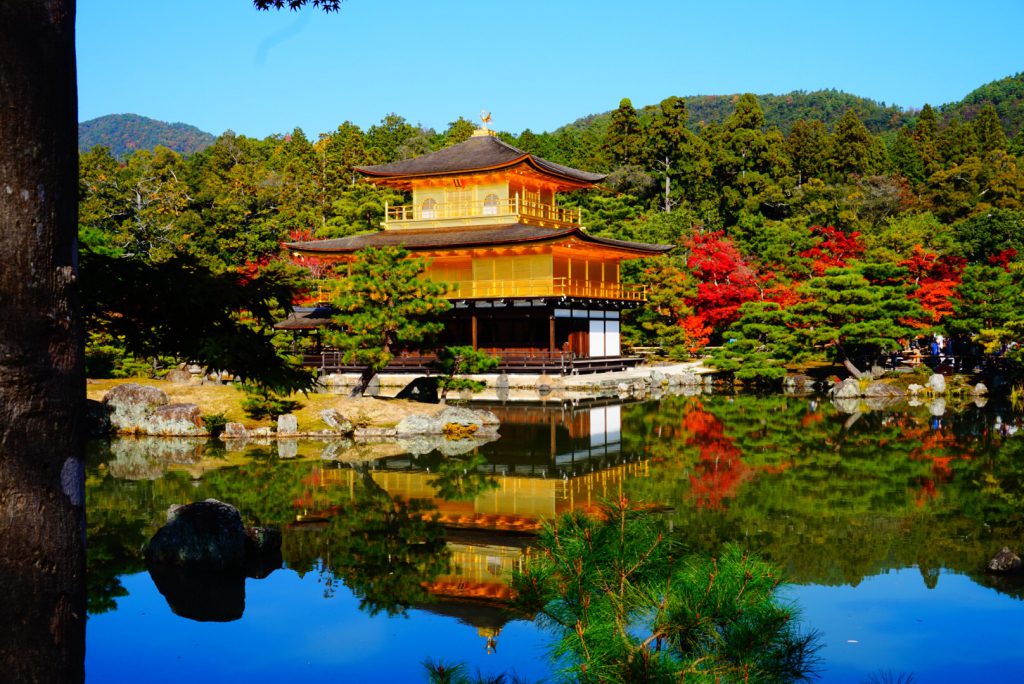
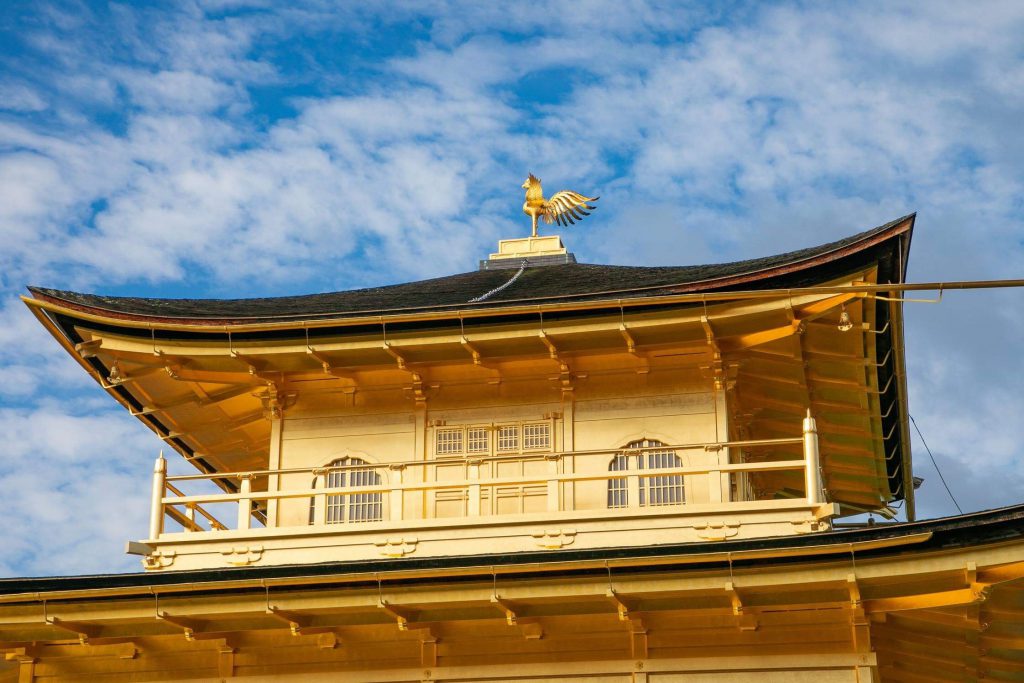
In last
The culture that flourished in the early 14th and 15th centuries, during which Yoshimitsu lived, is characterized by the amalgamation of aristocratic official culture, and the newly developed samurai culture. It is called Kitayama culture. The Rokuon-ji Temple, which was created by Yoshimitsu Ashikaga, who was a samurai and general, who also had a deep relationship with the aristocrats, is a building that is truly representative of Kitayama culture. If you look at the shining view of the Golden Pavilion while walking along the banks of Kagamiko Pond, you will be sure to feel the essence of the culture that blossomed in Japan almost 600 years ago.
